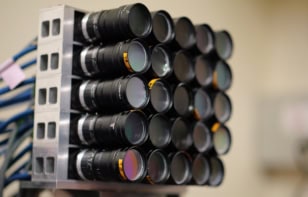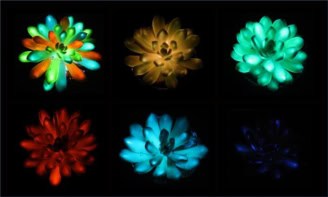The first reliable technique for focusing ultrasound waves inside the skull could lead to a non-invasive treatment for brain tumours. Greg Clement and Kullervo Hynynen of Harvard Medical School in the US used computed tomography to control an array of 320 ultrasound transmitters, which focuses the waves at target locations inside the skull. The researchers hit their targets to within a millimetre – an achievement that overcomes a major hurdle in the development of ultrasound treatments for brain surgery (G Clement and K Hynynen 2002 Phys. Med. Biol. 47 1219).
Ultrasound was first proposed as a method for destroying brain tumours in the 1940s, but progress has been hampered by unwanted heating caused by the ultrasound waves, and the difficulty of focusing the waves accurately onto the desired part of the brain. Researchers recently found that heating could be reduced by using an array of transmitters attached to the skull to distribute the ultrasound energy evenly.
To tackle the focusing problem, Clement and Hynynen developed an algorithm based on the thickness, density and orientation of the skull to control a hemispherical array of ultrasound transmitters. The pair tested their technique on ten human skulls – donated for medical research – that had been filled with water to simulate brain tissue. Microphones were placed in the water to detect the position of the focus of the ultrasound waves.
Clement and Hynynen determined the physical characteristics of the skulls by taking X-ray images using computed tomography. These details were then fed into the algorithm, which calculated the phase of the wave that each ultrasound transmitter must emit to produce a focus at the chosen location. The researchers found that their technique produced a focus at an average distance of about half a millimetre from the desired position.
Clement and Hynynen admit that there is some way to go before their method can be used on patients, but they are pleased with the preliminary results. “We believe our focusing method and array system together present the first clinically feasible approach to non-invasive trans-skull ultrasound surgery,” says Clement. The pair now hope to refine their model to take into account refraction effects inside the skull and the effects of internal layers of bone.



